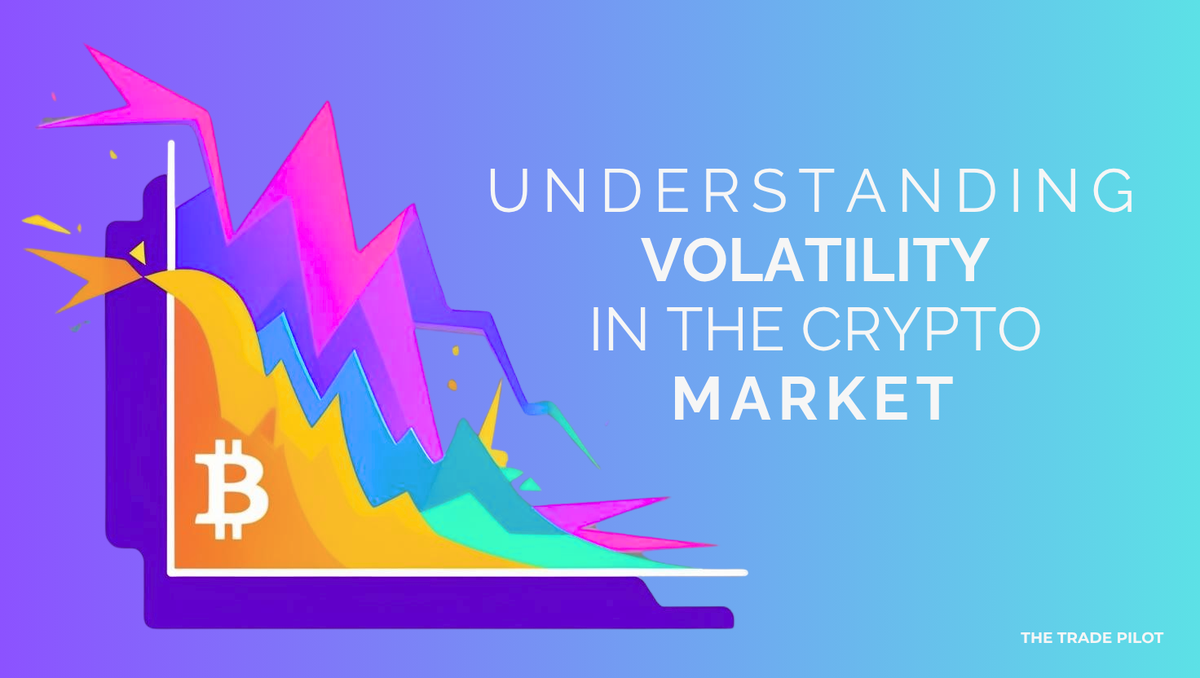Crypto prices go up and down fast—but why? In this article, we break down what causes crypto volatility and how you can manage it as a trader or investor.
One of the first things newcomers to crypto notice is how quickly prices can change. A coin might be up 20% in the morning and down 15% by evening. This rapid movement is known as volatility, and it's one of the defining characteristics of the cryptocurrency market.
But what exactly causes such extreme price swings? And how should you deal with volatility if you're investing or trading in crypto?
Let’s explore what volatility is, why it's so common in crypto, and how you can make smarter decisions in a volatile environment.
What Is Volatility?
Volatility refers to the degree of variation in the price of an asset over time. High volatility means prices are moving up and down rapidly; low volatility means prices are relatively stable.
In traditional finance, assets like government bonds are considered low-volatility, while assets like tech stocks can be more volatile. In the crypto world, volatility is often far greater than in traditional markets.
Why Is the Crypto Market So Volatile?
Several factors contribute to high volatility in the crypto space:
New and Emerging Market
Crypto is still relatively young compared to traditional financial markets. With lower overall liquidity and market maturity, even modest trades can significantly impact prices.
Speculation and Hype
Prices are often driven by news, social media, and public sentiment. A tweet from a major influencer can cause massive price jumps or drops almost instantly.
Lack of Regulation
The absence of global regulatory standards makes the market more prone to manipulation and sudden shifts, as there's less oversight and consistency across regions.
Thin Liquidity
Many cryptocurrencies have limited liquidity, especially altcoins. A few large buy or sell orders can move the price significantly in a short period.
24/7 Trading
Unlike traditional markets, crypto trades non-stop, including weekends and holidays. This constant activity means there's no downtime for emotions to settle, leading to quick and sharp reactions.
How Volatility Affects Traders and Investors
For Traders:
Volatility creates opportunity. Sharp price movements allow traders to profit from both upward and downward trends—if they can time their trades correctly. But it also increases risk.
For Investors:
Volatility can be unsettling. Watching your portfolio fluctuate wildly can trigger emotional decisions, such as panic selling or overbuying during rallies.
Learning to stay calm and focus on long-term goals is key to success for long-term investors.
Managing Volatility: Tips for Beginners
Don’t Invest More Than You Can Afford to Lose
This is rule number one in crypto. The market is unpredictable, and while profits can be large, so can losses.
Use Dollar-Cost Averaging (DCA)
By investing a fixed amount regularly, you avoid trying to time the market and reduce the emotional stress of buying at the wrong moment. Read more
Set Stop-Losses and Take-Profits
If you're trading, setting stop-loss and take-profit levels helps automate your strategy and limit emotional decisions. Read more
Diversify Your Portfolio
Don’t put all your funds in one coin. Diversifying reduces your exposure to volatility in a single asset.
Use Bots with Risk Controls
Trading bots like The Trade Pilot can help manage trades automatically with built-in risk management tools.
Volatility Isn’t Always Bad
It’s important to remember that volatility is not inherently negative. It creates opportunities for growth and can be an asset for traders. The key is understanding how to work with it, not against it.
The crypto market’s wild nature is part of what makes it exciting—but also risky. Education, preparation, and emotional discipline are your best tools.
Conclusion: Ride the Waves, Don’t Fight Them
Volatility will always be part of the crypto landscape. By understanding why it happens and how to manage it, you can make more informed decisions and feel more confident in your strategy.
Whether you're holding for the long term or trading daily, learning to navigate crypto volatility is a must.

